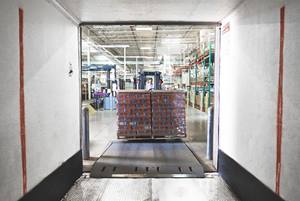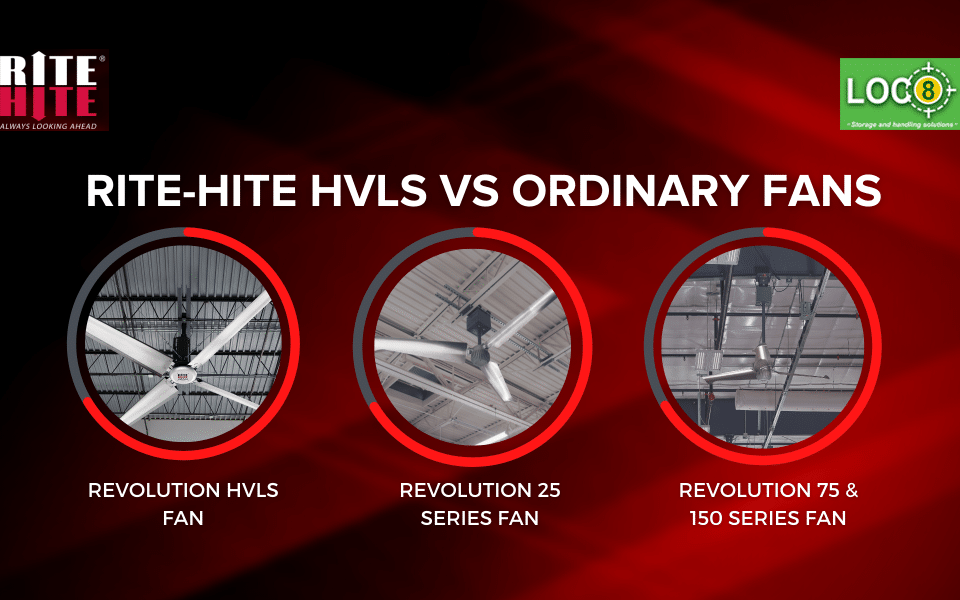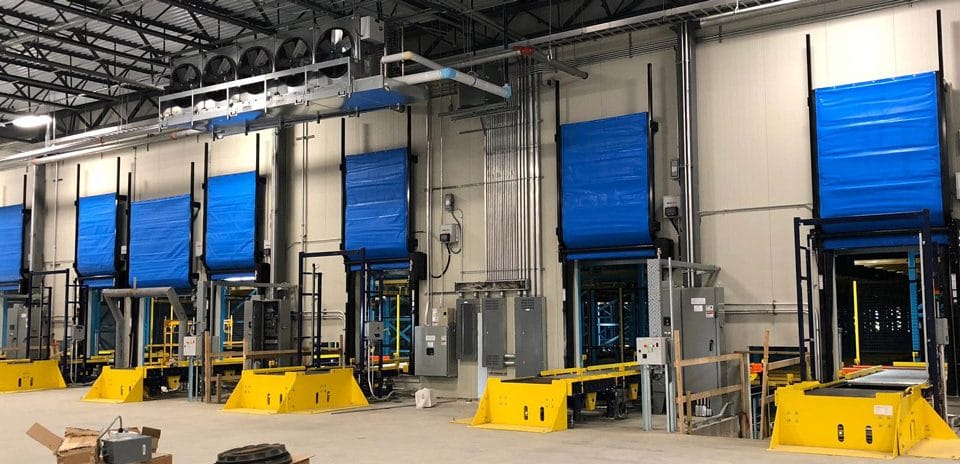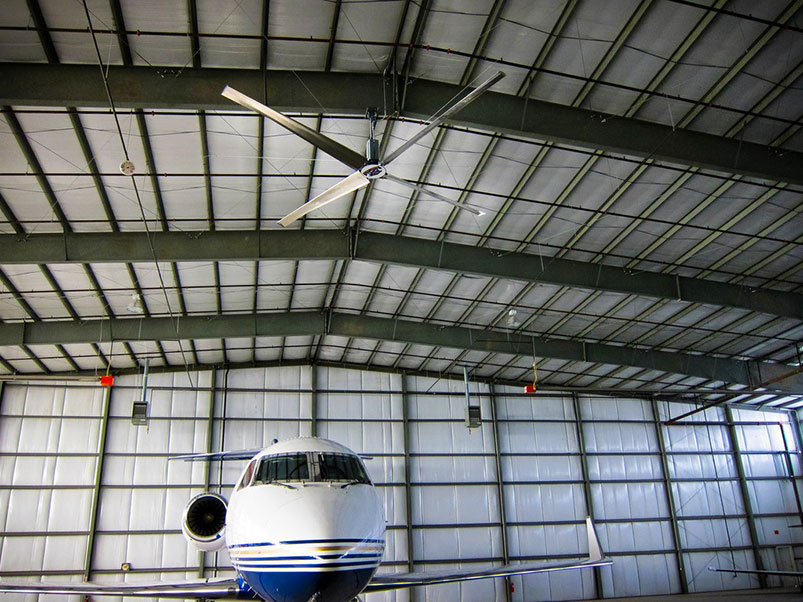
How Quickly Will an HVLS Fan Pay for Itself?
May 7, 2019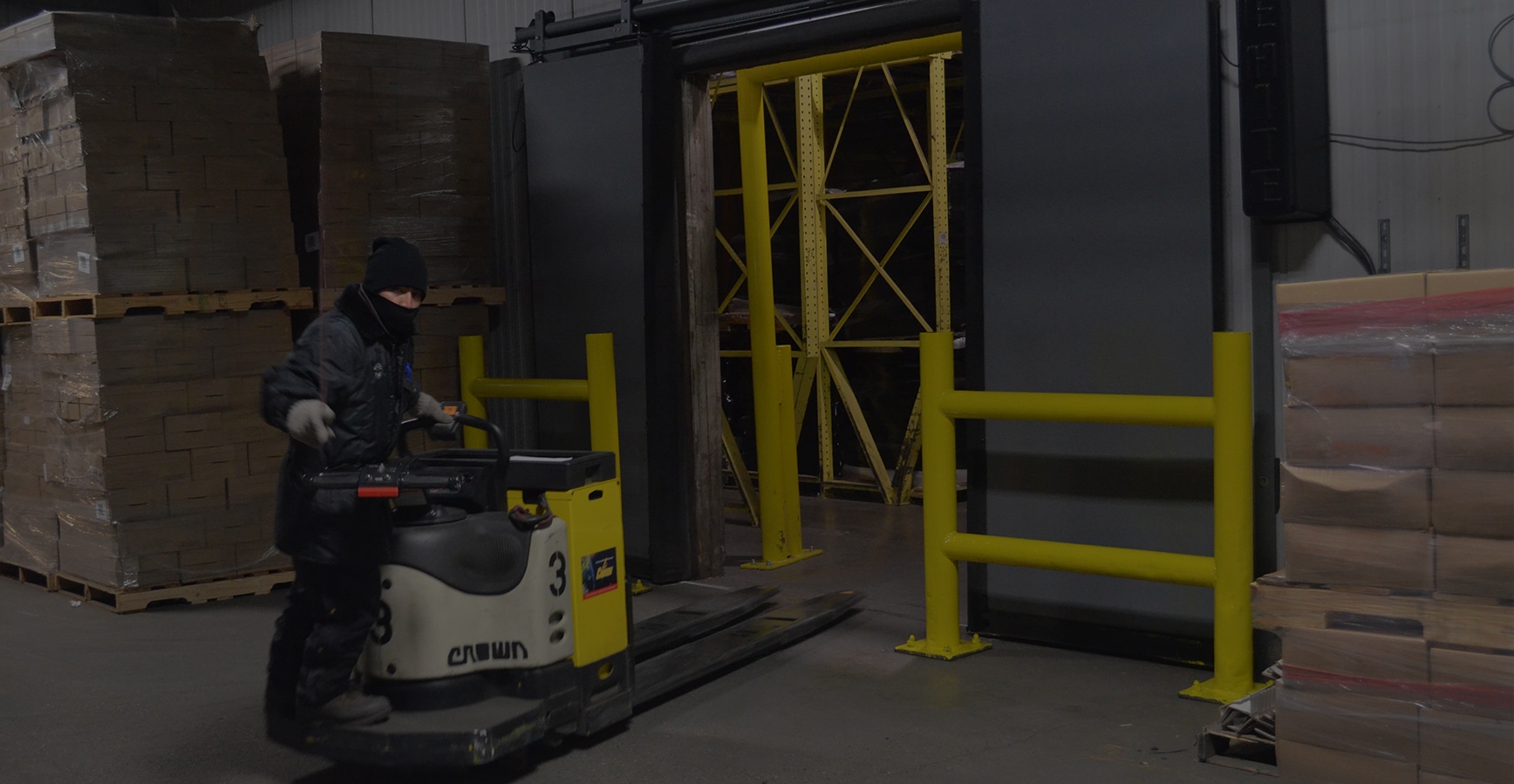
4 Biggest Cold Storage and Refrigerated Warehouse Trends
December 17, 201910 Tech Tips for Safer Loading Docks
Loading docks can be one of the most accident-prone areas in any industrial facility. And it’s no wonder, with the busy demands for material handlers to meet tight delivery deadlines.
While employee training should always be top priority, another way to minimize risk around loading docks is to take advantage of current technologies. While loading dock equipment has traditionally been fairly low-tech, that’s changing.
Here are 10 high-tech solutions that can help increase safety for workers at the loading dock:
1. Reduce Radio Noise and Busy Paperwork with Loading Dock and Trailer Management Software
New loading dock software can create a safer environment by clearly communicating the current status of each dock position. From the moment drivers arrive at a facility and check-in at a touchscreen kiosk, managers and yard personnel have a constant, real-time digital view of where the trailer is in the loading/unloading process.
This type of software takes the place of internal paperwork and distracting radio conversations that can all too often lead to human error. Reducing confusion not only improves safety and increases productivity, but it also helps reduce detention and demurrage charges incurred when trucks have excessive wait times before loading or unloading.
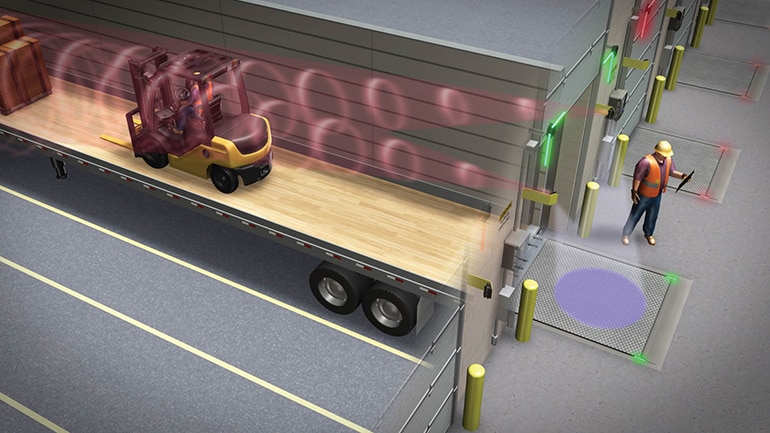
2. Introduce a Blue Light Policy with Motion-Activated Sensors and Lights
Recently, new light communication technology allows facility managers to beam a blue light onto a loading dock leveler to help prevent forklift and pedestrian collisions. This system employs a sensor, which triggers when activity is detected inside the trailer. This light is similar to the blue warning lights commonly found on many forklifts, but (unlike the forklift light) it is visible to workers on the dock even if a forklift is in the nose of the trailer, helping to keep the blue light in plain sight.
Other areas that could benefit from extended pre-collision warning times include busy, unmarked intersections and blind corners. Ceiling-mounted units help effectively communicate when pedestrians or fork truck traffic is approaching the intersection by employing high-visibility LED lights, including a blue LED light onto the floor.

3. Build Confidence with Enhanced Light Communication Inside at the Loading Dock
Loading dock workers are familiar with the red/green lights adjacent to or incorporated into the control boxes at each dock position. However, ancillary products have been developed to maintain line-of-sight communication regardless of obstructions in front of mounted lightboxes. Found in the upper corners and/or embedded next to the leveler, these control box mimicking lights help communicate current restraint status to forklift drivers as they both enter and exit trailers.
4. Keep Boots Off the Ground with Light and Audio Communication Outside the Dock
Outside of the loading dock, sensors can detect when a trailer is backing into a dock position. Because there is often a 70-ft distance between the dock and a truck’s engine, this back-over hazard can often go undetected by even the most attentive workers. When activated, a light embedded in a vehicle restraint or in standalone mounted box flashes and an audible alarm sounds to warn workers of the backing vehicle. This system provides crucial extended warning time to vacate the hazard.
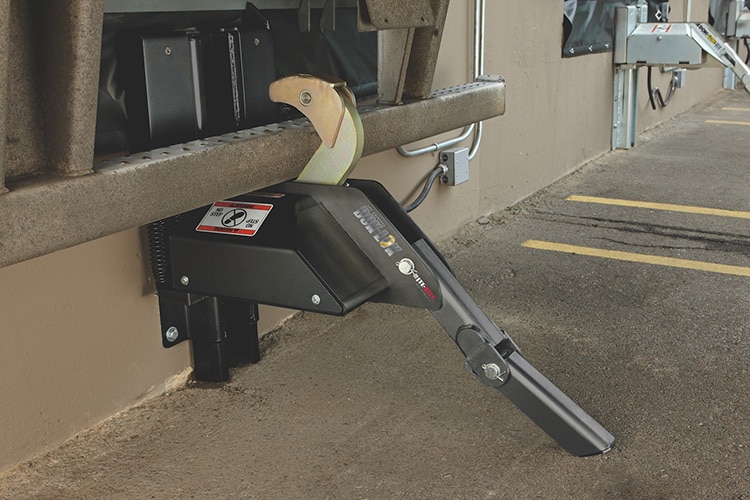
5. Verify Restraint Engagement and Trailer Stand Presence from Inside the Loading Dock
In most cases, reducing the number of processes that place employees outside on the dangerous drive approach is the best defense against back-over accidents. Lock verification systems, which use an outside camera and inside monitor help keep boots off the ground and maintain supply chain integrity. The camera helps capture when a trailer has arrived at a given dock position and when/if it is properly restrained. Dual camera systems can also help detect if a trailer stand is present.
6. Help Mitigate Trailer Separation Accidents with Premium Shadow Hook Technology
Restraints that secure a vehicle when it backs up to the facility are essential for creating safe loading dock environments. Today’s leading restraints operate automatically, most commonly wrapping around a trailer’s rear-impact guard (RIG), to secure it to the loading dock.
RIG-based automated restraints not only enhance employee safety by ensuring the trailer can’t be mistakenly pulled away when a forklift is still inside, they also help prevent other trailer mishaps, including “trailer creep” (gradual separation from the building); trailer pop-up or upending; and landing gear collapse, all while keeping boots off the ground of the dangerous drive approach.
The most advanced automatic vehicle can even secure trailers that have obstructed RIGs, including intermodal container chassis. These restraints use a “shadow hook” function that provides a secondary lock if the vehicle begins to pull away.
7. Reduce Chronic Injuries with Ergonomic Loading Dock Systems
Crossing the gap from the loading dock floor to the back of a trailer can be a bumpy, painful ride. Well-designed dock levelers reduce the jarring, whole-body vibration, commonly referred to as “dock shock”, that forklift operators experience going in and out of the trailer. Levelers that smooth this transition also decrease the chances of damage to products and equipment.
The most advanced levelers can reduce dock shock by incorporating a constant-radius rear hinge that reduces the bumps and gaps at the rear of the leveler, as well as two-point crown control and an optimized lip chamfer at the front of the leveler to reduce the speed bump effect normally felt by forklift drivers as they enter and exit the trailer.
8. Maintain Supply Chain Integrity with Drive-Through Application Solutions
“Drive-through” docks are quickly gaining recognition as the gold standard for safety and security in food, pharma, and other industry segments. In this application, a trailer’s doors remain locked until it has backed into the dock and been secured. At that point, the overhead dock door is raised, the security seal broken and the trailer doors are opened into the building. This limits opportunities for exposure to outside elements and/or contaminants that could degrade the cargo or break the cold chain. It also eliminates the safety hazard of workers going outside onto the drive approach to unlock the trailer and minimizes slip hazards caused by outside precipitation.
Drive-through applications require a vertically storing leveler, automated vehicle restraint and loading dock shelter that allows trailer doors to open inside a facility. An under-leveler seal designed for vertical levelers is also worthwhile, as closing the “fourth side” gap will enhance the energy efficiency, and minimize moisture or pest infiltration.
9. Implement Pedestrian & Equipment Fall Protection Technologies to Help Protect the Drop-Off
A worker falling from a dock door opening is extremely dangerous. Some levelers can be equipped with safety lips that automatically create a drive off barrier when the leveler is in a stored position. They vary in height, depending on the needs of the facility. Industry-leading levelers have lips that can stop a forklift weighing 10,000 lb. traveling at 4 mph without damage to the leveler. It’s an upgrade that emphasizes safety.
Another way to help protect workers from falling off an open loading dock edge is with a retractable barrier. In many instances, these barriers are made from reinforced fabric that offers resistance. The most advanced barriers – made from PVC-coated fiberglass mesh and heavy-duty polyester – will meet OSHA’s Walking-Working Surfaces regulations by reaching 58 in. tall, can stretch across openings larger than 16 feet wide and are able to stop up to 30,000 lb. with minimal damage to the barrier.
Some barriers can even be programmed into a safe sequence of operations to reduce safety risks.
10. Interlock Safety Equipment with Safe Sequence of Operations
Traditionally, each piece of loading dock equipment – including vehicle restraints, levelers and overhead doors – is operated independently of the others. While most are now operated with the push of a button, there is still risk involved regarding the order of use.
Today’s leading loading dock control systems can ensure that workers operate equipment in a safe sequence of operation. For example, a common programmable sequence requires the vehicle restraint to be properly engaged before an overhead door can be raised. Continuing this safe sequence, the door must then be raised before the dock leveler can be operated. Even if the buttons are pushed in the wrong order, the programmed sequence prevents anything from happening – helping to avert disaster. When a trailer is ready to leave a facility, this order of operation is reversed.
Loading docks are inherently dangerous areas, and it is critical that workers follow safety protocols and all safety equipment is kept in top working condition. If your facility is considering upgrading its loading docks, consider retrofitting with new, state-of-the-art equipment and software to mitigate risk and improve safety. Your employees and customers will be glad you did.
The information herein is provided as a general reference regarding the use of the applicable product(s) in specific applications. This information is provided without warranty. It is your responsibility to ensure that you are using all the mentioned products properly in your specific application and in accordance with all laws and regulations.
If you’d like to receive your personalized energy and cost savings assessment, please contact the experts at Loc8 (971 58 657 9823).


